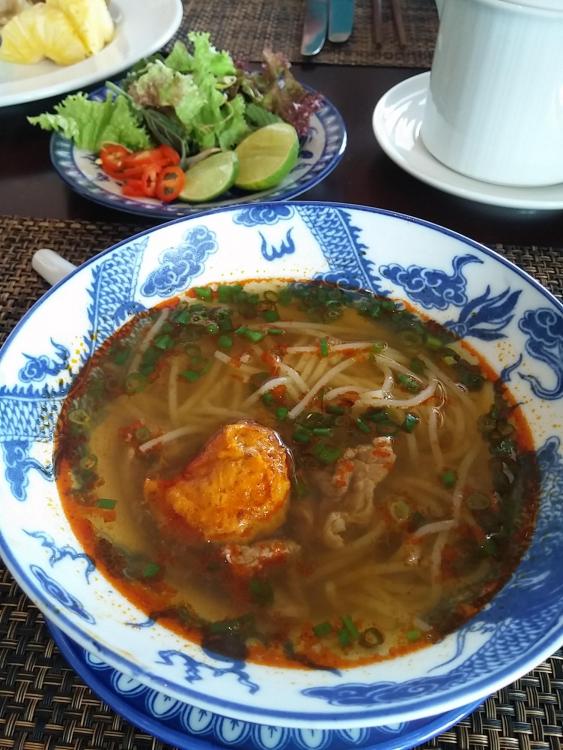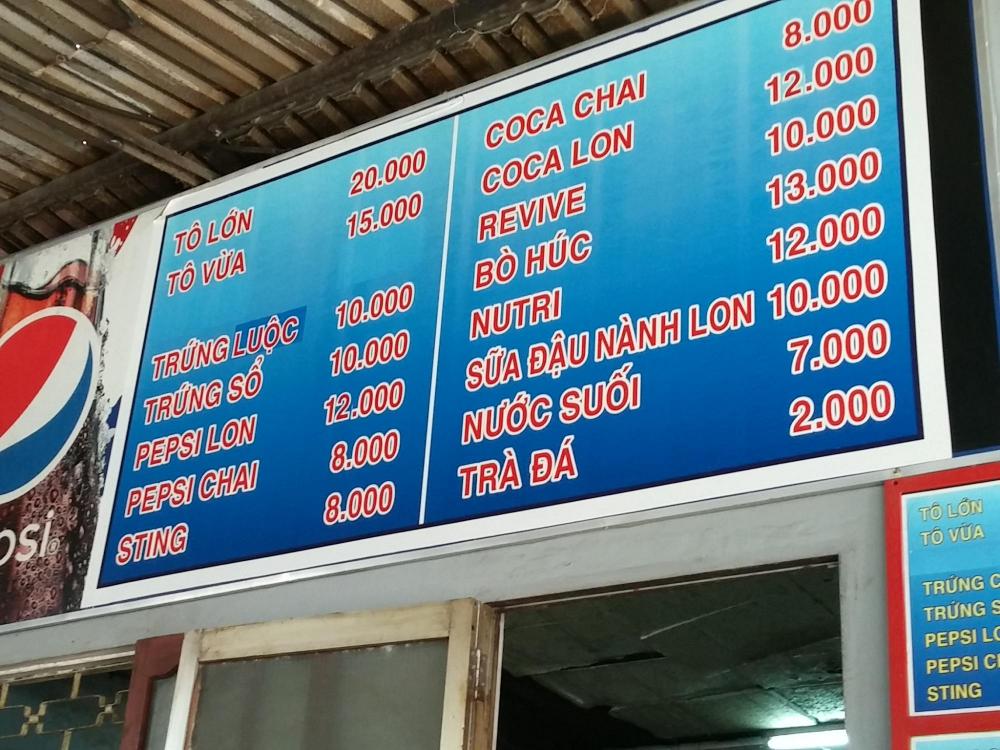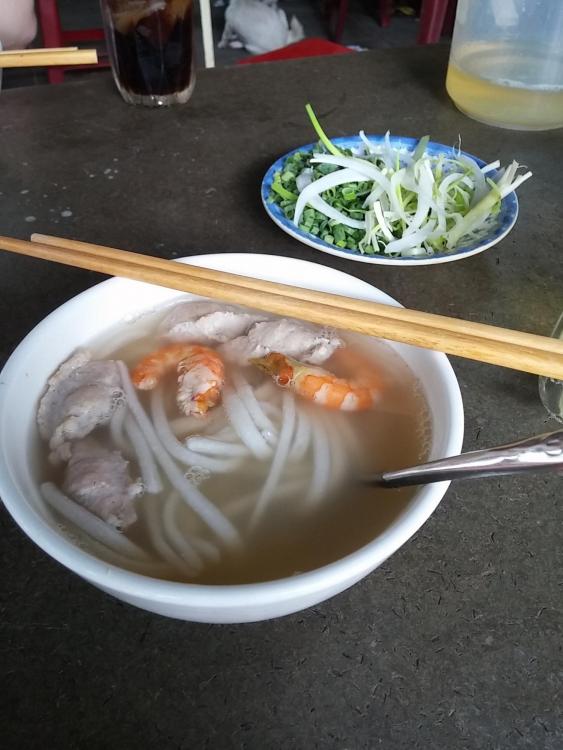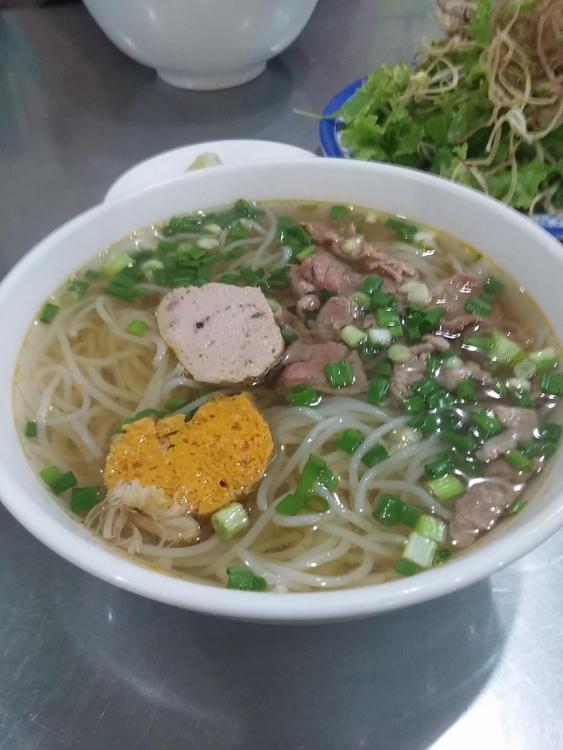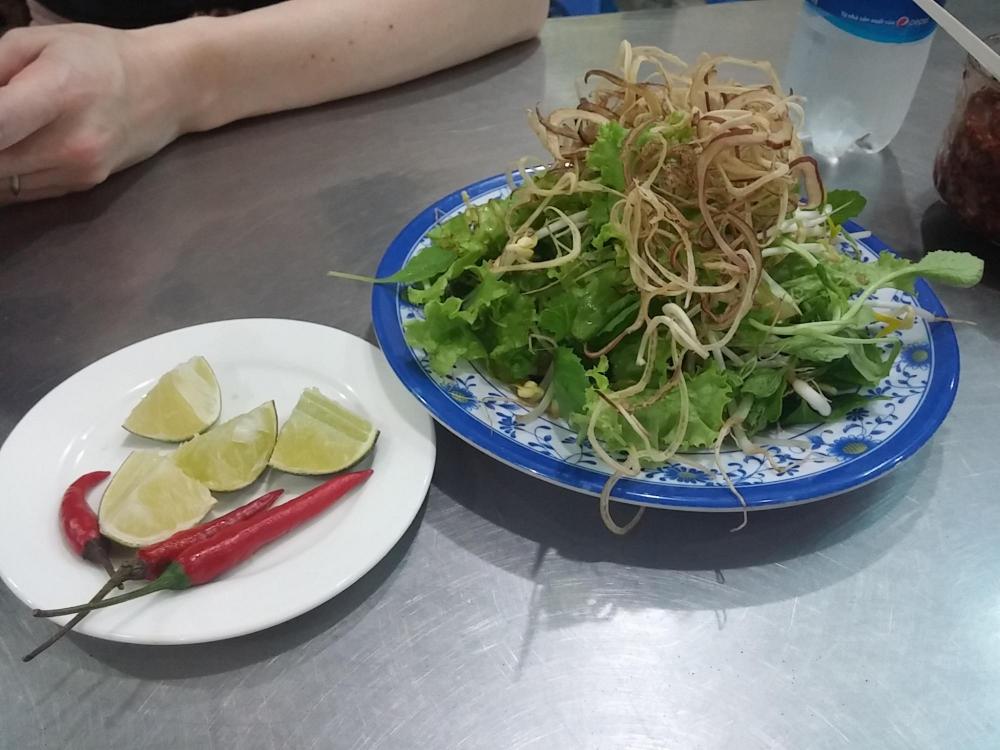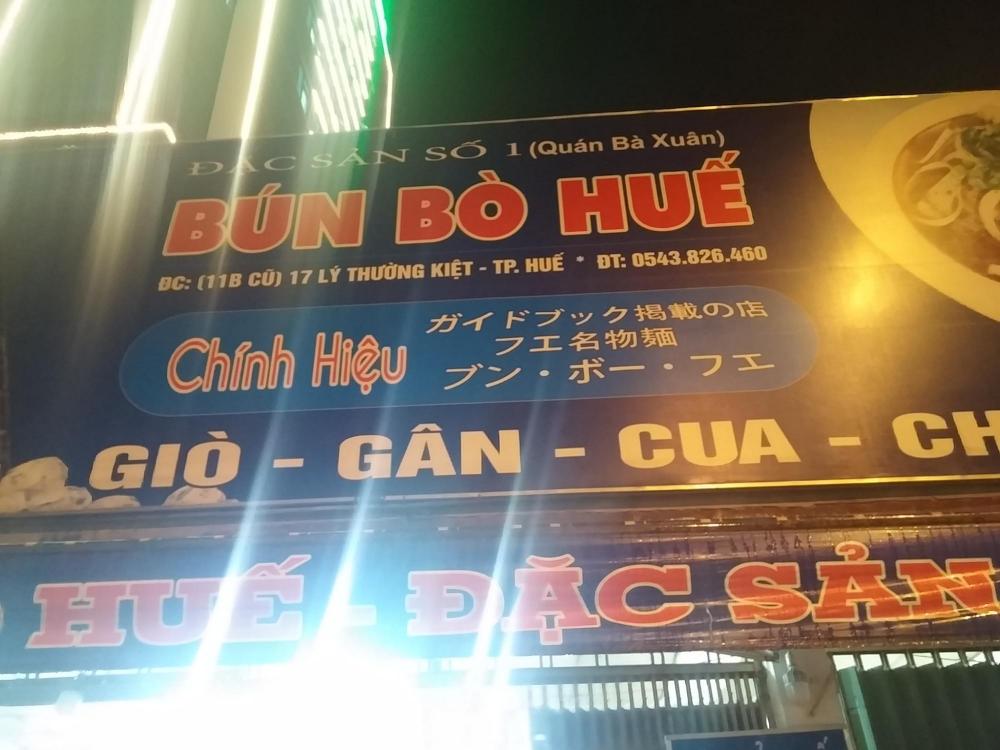Geez... this whole "work" thing is really cutting into my posting time...
Breakfast was again included in our hotel rate. They had a wide array of Western options, as well as a Vietnamese soup station making Bun Bo Hue (boon baw hway), of course, but also pho and I think they also made banh canh (buyng cuhng) which is another specialty of Central Vietnam, which I'll discuss in a second...
Interestingly, the hotel's version of bun bo hue was quite good, even by comparison to the local options, and they gave out as much herbs as you'd like...
As opposed to pho, bun bo hue uses round rice noodles, not flat, and there are pieces of beef as well as usually some kind of caseless sausage-y things - but more quenelle-like in texture. Some are made from beef/pork, others have shrimp or crab in them. Bun bo hue is very aromatic, mostly with notes of lemongrass and a slight shrimp paste flavor... some places had the shrimp more predominant than others. Typically served with it are limes (key limes), sliced chilis, lettuce, mint, thai basil (the mini kind was prevalent in Hue as well as Hoi An) and some spirulized thing which I'm not exactly sure what it is.. I didn't get a photo of it here, but it should show up later and I'll point it out.
After breakfast, we went to see the major sight of Hue, the imperial citadel, which was the home of the Emperor until the 1800s when the French colonized VN.
This has become the symbol of Hue.
This is the main gate into the citadel:
The entrance courtyard:
Inside one of the halls:
After seeing the citadel, it was time for lunch, so I wanted to go to a local place for banh canh. When we were in Saigon, on the excursion to see the Cu Chi tunnels, we stopped for lunch at a place that specialized in banh canh - I didn't realize it at the time, but banh canh is a specialty of the central part of Vietnam.
We went here:
Here's their menu to note the prices:
This is basically saying that a "big bowl" of banh canh is 20,000VND - less than $1.
This is the banh canh. Note how thick the noodles are - they have a very interesting texture. This place had these pork quenelles and a couple of shrimp, whereas the place near Saigon just had slices of boiled lean pork. The overriding flavor of banh canh is black pepper - there is even a dish of black pepper (doled out with a spoon, not a shaker) in the condiment tray in case you want more. Green onion is provided for greenery.
After lunch, we went back to the hotel to relax in the A/C and get out of the heat, and then we enjoyed our free 45 minute massages, offered to us upon check in... How sweet is that?
After we recovered, and layed around some more, we went for dinner - to a place that specialized in Bun Bo Hue...
Some sidewalk shots walking around...
I had to stop and pick up more mangosteen. These weren't as good as the ones I got in Hoi An, but were less expensive - a little less than $2 per kilo:
The bun bo hue:
This has a pork quenelle, some pieces of beef, and the yellow quenelle I think is made from crab. It's served with:
Limes, chilis, lettuce, mint (peppermint again!) , and it looks like the spirulized thing on top would be some kind of dried shallot. The broth here was very similar to what we had at the hotel.
Here's the place's sign:
The name of the restaurant is Quan Ba Xuan - basically meaning Mrs. Suan's restaurant.
ETA, in the middle of the sign, it says Chinh Hieu - which means they understand Chinese... I just noticed this now!

